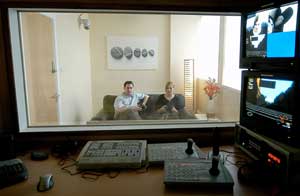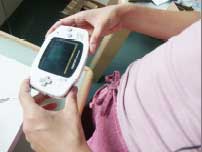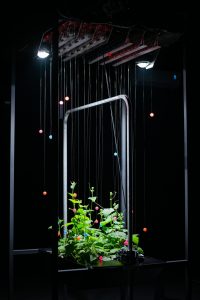Glasgow Caledonian University (Scotland) has set up the eMotion Laboratory , a living room with a two-way mirror to study the “sweaty palmed excitement” of people playing their computer and console games.

Infrared cameras will track eye movements and pupil dilation, pressure sensors measure contact on game pads and moisture sensors track excitement.
Analysis of the information could provide information as to what involves a player and why.
Jon Sykes, the head of the laboratory, said: “The sale of a computer game depends upon the initial five minutes of play and the eMotion Laboratory will help designers to determine which moments are emotionally stimulating, and which fail to impress.”
“Soon players will weep at the death of a game character, much as they currently do when watching a movie.”
Via BBC News.
Last year, a thesis project by interactive designer Jan Raposa investigated how monitoring the emotional state of a player could make a game more immersive.

One of his prototype was Game Boy Advance fitted with a special cartridge containing controllers for sensors to be attached to the body of the player. The goal was to help asthmatic children learn to control their attacks. The biofeedback device displayed the child’s heartbeat and respiration through metaphors. To achieve a high score in the game, the kid had to relax and pay attention to his respiratory process, using biofeedback to adjust his respiratory functions.







